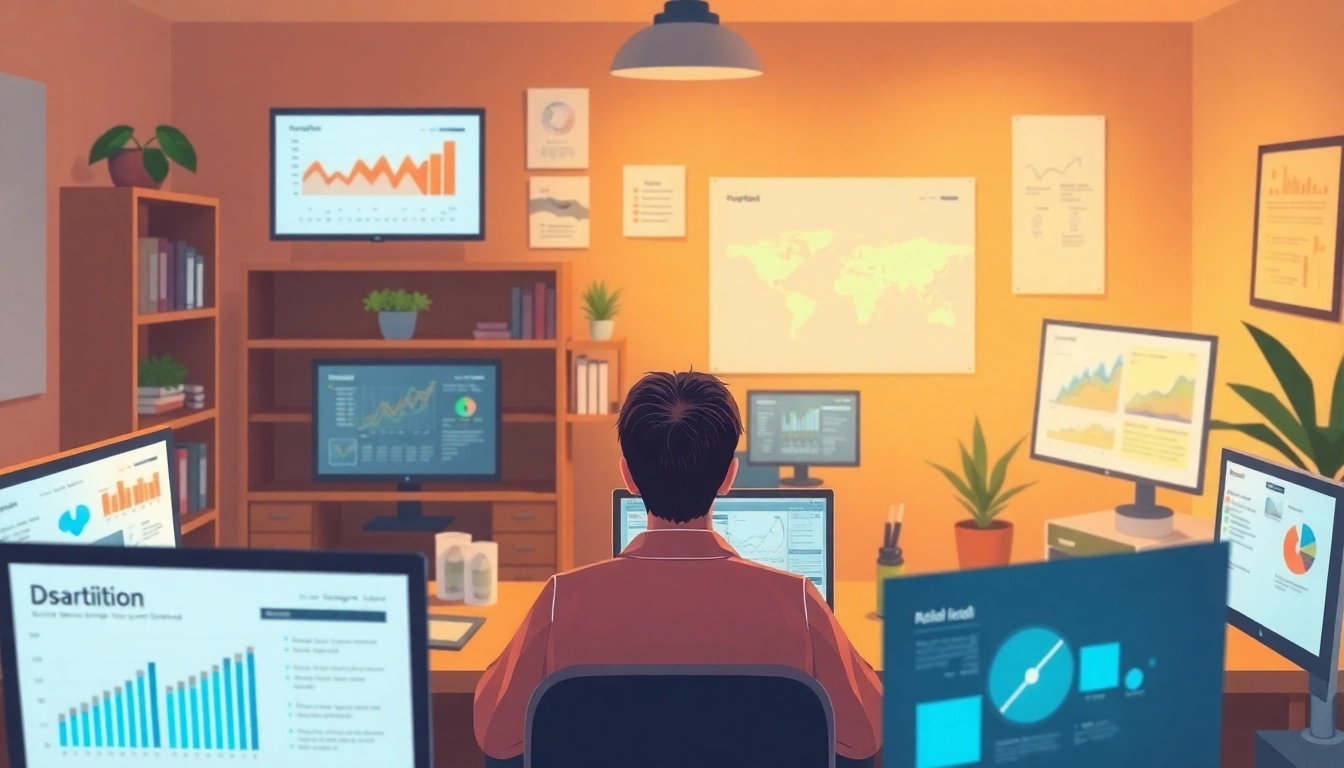Understanding Health Informatics: Foundations of the Field
In the rapidly evolving landscape of healthcare, the integration of technology with clinical practice has emerged as a crucial area of focus. This intersection of information technology and health services is defined as health informatics. By analyzing data, managing health information systems, and utilizing digital tools, health informatics aims to enhance patient care and streamline health services. The relevance of this field cannot be overstated, as it plays a pivotal role in addressing contemporary healthcare challenges. For more resources and insights into this field, you can explore www.informaticsview.com.
Defining Health Informatics and Its Importance
Health informatics is often described as the blend of healthcare, information science, and computer science. It involves the acquisition, storage, and utilization of health information to improve patients’ health outcomes. The significance of health informatics lies in its ability to harness vast amounts of data generated within healthcare environments to promote efficiency, enhance decision-making, and provide personalized care.
Key areas of impact include:
- Improved Patient Outcomes: Effective use of health informatics can lead to better clinical decisions, thus resulting in improved patient outcomes.
- Increased Efficiency: Automating administrative tasks and streamlining workflows reduces administrative burdens, allowing healthcare professionals to focus more on patient care.
- Enhanced Communication: Health informatics fosters greater collaboration among healthcare providers by facilitating easy access to patient information and medical history.
Historical Evolution and Milestones
The history of health informatics can be traced back to the early 1960s when the first computerized clinical databases were developed. Over the decades, several key milestones have shaped its evolution:
- The Development of EHRs: The initial introduction of Electronic Health Records (EHRs) in the late 20th century marked a significant shift in how patient information was stored and accessed.
- Meaningful Use Regulations: In the 2000s, initiatives like the HITECH Act emphasized the need for meaningful use of EHRs to qualify for financial incentives, motivating healthcare organizations to adopt these technologies.
- Advent of Telemedicine: The rise of telemedicine applications, particularly during the COVID-19 pandemic, underscored health informatics’ role in providing care remotely and ensuring continuity of care.
Key Disciplines within Health Informatics
Health informatics encompasses multiple disciplines, each contributing to its overall effectiveness in improving healthcare delivery. These include:
- Clinical Informatics: The application of informatics principles to healthcare delivery, focusing on improving patient care through data analysis and technology.
- Nursing Informatics: A special area focusing on how nurses use informatics to improve patient care and outcomes, inputting data, and managing health information.
- Public Health Informatics: The integration of informatics into public health practices to analyze patterns, manage resources, and improve community health.
The Role of Technology in Health Informatics
Emerging Technologies Shaping Patient Care
The landscape of health informatics is continually shaped by technological advancements. Several emerging technologies are at the forefront of transforming patient care:
- Artificial Intelligence: AI applications, like predictive analytics, help in diagnostic decision-making by analyzing patient data and offering insights on potential health risks.
- Blockchain Technology: This technology offers robust solutions for ensuring data integrity and security, particularly essential in managing sensitive patient health information.
- The Internet of Medical Things (IoMT): Wearable devices and remote monitoring tools facilitate continuous patient health tracking and data collection, contributing to personalized care.
Data Management and Electronic Health Records
Electronic Health Records (EHRs) serve as one of the most fundamental pillars of health informatics. They centralize patient data, making it accessible to authorized healthcare professionals. Efficient data management ensures that patient information is accurate, up-to-date, and easily retrievable when needed.
Challenges in EHR implementation can include:
- Data Entry Errors: Inaccurate input can lead to misunderstandings in patient care.
- Interoperability Issues: Difficulty in sharing data across different systems can hinder effective communication among providers.
To address these challenges, healthcare organizations should invest in comprehensive training for staff and establish robust protocols for data management.
Telehealth Innovations and Their Impact
Telehealth has transformed traditional healthcare delivery, particularly by expanding access to care and reducing barriers for patients, including those located in remote areas. Key innovations in this area include:
- Virtual Consultations: Healthcare providers can connect with patients through video calls, maintaining quality care while reducing the need for in-person visits.
- Remote Patient Monitoring: Technologies such as wearable health devices allow for continuous monitoring of patients’ vital signs, enabling prompt intervention if needed.
- Automated Scheduling and Follow-Up: Online portals streamline the appointment process, making it easier for patients to book and manage their healthcare visits.
Challenges in Implementing Health Informatics Solutions
Common Barriers Faced by Healthcare Institutions
While the benefits of health informatics are clear, the implementation often faces several challenges, including:
- Financial Constraints: High initial investment costs for technology and training can deter healthcare institutions from adopting informatics solutions.
- Resistance to Change: Healthcare professionals may resist adopting new technologies, especially if they feel it adds complexity to their existing workflows.
- Concerns about Data Privacy: With increased digitization comes a heightened risk of data breaches, leading to patient privacy concerns that institutions must address proactively.
Strategies for Overcoming Implementation Hurdles
To effectively navigate the challenges of health informatics implementation, institutions can adopt various strategies:
- Gradual Implementation: Introducing new technologies in phases can help healthcare providers adjust without overwhelming them.
- Comprehensive Training Programs: Ensuring all users are adequately trained can alleviate fears and boost confidence in using new systems.
- Stakeholder Engagement: Involving healthcare professionals in the decision-making process can foster buy-in and reduce resistance to new technologies.
Regulatory Considerations and Compliance
Compliance with regulatory standards is critical in health informatics. Organizations must navigate laws such as the Health Insurance Portability and Accountability Act (HIPAA), which provides guidelines on protecting patient data. Compliance ensures:
- Patient Trust: Patients are more likely to share information when they believe their data is secure.
- Avoidance of Legal Penalties: Non-compliance can result in significant fines, affecting an organization’s financial standing.
Future Trends in Health Informatics
AI and Machine Learning in Clinical Decision Making
The integration of Artificial Intelligence (AI) and Machine Learning (ML) into clinical decision-making is a burgeoning trend in health informatics. These technologies analyze large datasets to provide more accurate diagnoses, suggest treatment options, and predict patient outcomes based on historical data. For instance, AI-driven algorithms can identify patterns in patient data that might elude human judgement, facilitating personalized treatment plans.
Personalized Medicine and Patient Engagement
The future of health informatics leans towards personalized medicine, where treatments are tailored to individual patients based on their unique genetic makeup, lifestyle, and health history. As part of this trend, patient engagement is also gaining importance; fostering stronger relationships between patients and providers leads to better adherence to treatment and improved outcomes. Technologies like health apps and online patient portals encourage proactive patient participation in their own care.
The Role of Big Data in Health Outcomes
Big data analytics is rapidly becoming a vital part of health informatics. By harnessing massive datasets from various sources, healthcare professionals can extract valuable insights that drive better policies and clinical practices. For example:
- Population Health Management: Analyzing trends in health data can help identify at-risk populations and tailor preventive measures.
- Cost Reduction Strategies: By understanding where resources are being misallocated, healthcare organizations can optimize spending and improve care quality.
Getting Involved in Health Informatics
Education Paths and Career Opportunities
The field of health informatics offers a wide range of educational and career opportunities. Institutions offer various degree programs, ranging from bachelor’s degrees to specialized master’s programs in health informatics. Professionals can work in diverse roles, such as:
- Clinical Informatician: Focuses on improving healthcare delivery through data analysis and technology integration.
- Health Information Manager: Responsible for overseeing patient data management and ensuring compliance with regulations.
- Data Analyst: Analyzes patient data to inform clinical decisions and organizational strategies.
Networking and Professional Development Resources
Getting involved in health informatics not only requires education but also networking and professional development. Joining professional organizations such as the American Medical Informatics Association (AMIA) can help individuals connect with industry leaders, access educational resources, and stay updated on the latest trends. Additionally, attending conferences and workshops enables professionals to gain insights from experts and cultivate valuable relationships throughout the field.
Case Studies: Successful Health Informatics Initiatives
Examining successful health informatics initiatives can provide valuable lessons for organizations looking to implement similar solutions. For example:
- Cleveland Clinic: Implemented an advanced EHR system combined with artificial intelligence tools, resulting in enhanced patient engagement and improved clinical workflows.
- Mayo Clinic: Leveraged big data analytics to develop a predictive model for patient outcomes, significantly reducing hospital readmission rates.
These examples underscore the potential of health informatics to transform healthcare delivery and improve patient care on a large scale.



